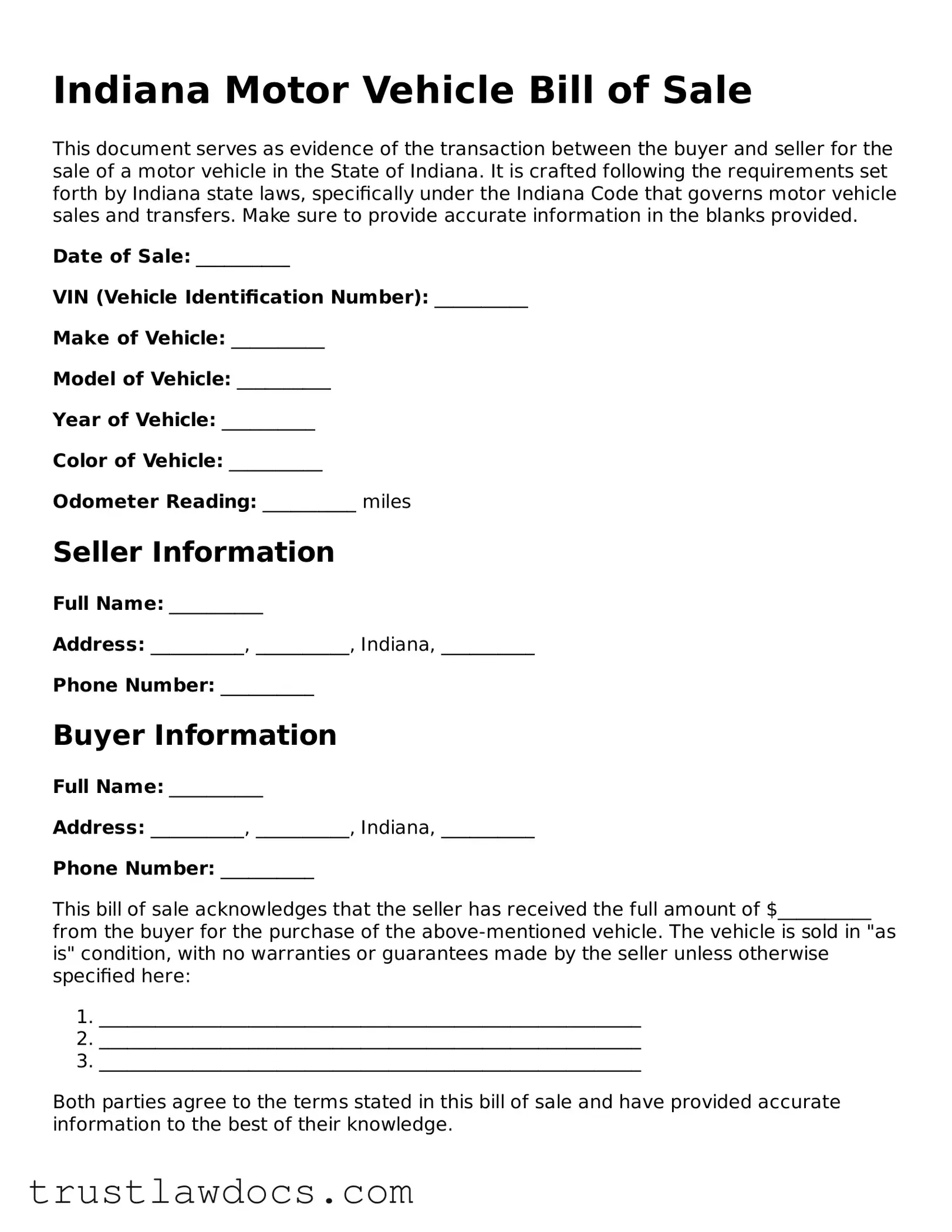What is an Indiana Motor Vehicle Bill of Sale?
A Motor Vehicle Bill of Sale in Indiana is a legal document that records the sale and transfer of ownership of a motor vehicle from one party to another. It typically includes details about the seller, the buyer, the vehicle, and the sale itself, such as the purchase price and date.
Do I need a Bill of Sale to sell a car in Indiana?
While Indiana law may not explicitly require a Bill of Sale to sell a car, it is highly recommended. It provides a written record of the transaction, which is useful for tax, legal, and personal record-keeping purposes.
What information should be included on a Bill of Sale?
An Indiana Motor Vehicle Bill of Sale should include the full names and addresses of both the seller and buyer, a detailed description of the vehicle (make, model, year, VIN), the sale price, the sale date, and signatures from both parties confirming the transaction.
Is a notary required for a Bill of Sale in Indiana?
Indiana does not require a Bill of Sale to be notarized for it to be considered legal. However, notarizing the document can add an extra level of fraud protection and authenticity to the transaction.
How does a Bill of Sale protect the seller?
A Bill of Sale protects the seller by providing proof that the vehicle was legally sold and transferred to the buyer. This can be important if there are any future disputes about the vehicle’s ownership or if the vehicle is involved in illegal activities after the sale.
How does a Bill of Sale protect the buyer?
For the buyer, a Bill of Sale is proof of ownership and confirms the details of the transaction, such as the purchase price. It’s an essential document for registering the vehicle in the buyer's name at the Indiana Bureau of Motor Vehicles (BMV).
Can I create a Motor Vehicle Bill of Sale by myself?
Yes, you can create a Motor Vehicle Bill of Sale by yourself. Ensure that it includes all the necessary information and that both the buyer and seller agree on the contents before signing.
What should I do after completing the Bill of Sale?
After completing a Motor Vehicle Bill of Sale in Indiana, both the buyer and seller should keep copies for their records. The buyer will need the document to register the vehicle in their name at the BMV.
Does a Bill of Sale need to be filed with any Indiana state agency?
No, a Bill of Sale does not need to be filed with any Indiana state agency. However, the buyer must present it at the BMV when registering the vehicle. Keeping a copy for your records is also recommended.
